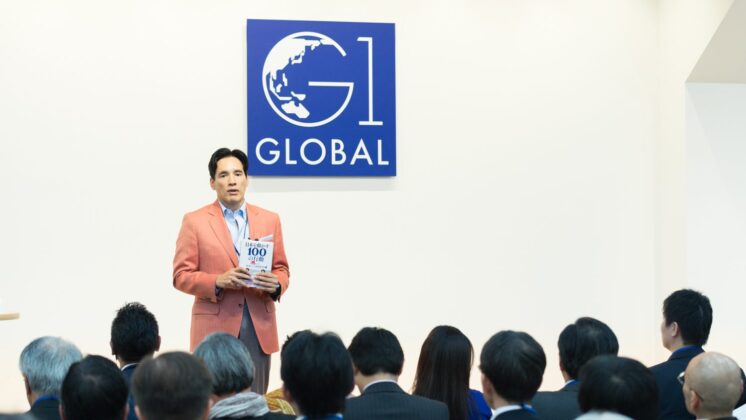The Asia-Pacific region is expected to grow into the largest aviation market worldwide in 2025. The capacity of airports in the Tokyo metropolitan area, which was a bottleneck in Japan’s aviation policy for many years, has been significantly expanded, with the number of departures and arrivals at Haneda now 447,000 per year and at Narita 300,000 per year. The Japanese aviation policy, which currently emphasizes the balanced development of national land under the condition of capacity constraints, should be drastically shifted toward a competitive policy with emphasis on enhancing international competitiveness.
1. Introduce Market Principles to Aircraft Landing Slots at Haneda and Narita, and Liberalize New Entry! Consolidate the Operation of Three Airports in the Tokyo Metropolitan Area, including Ibaraki Airport, to Enhance Competitiveness!
The annual number of departures and arrivals at Haneda and Narita in the Tokyo metropolitan area exceeds 740,000. This contributes to the national interest but the allocation of aircraft landing slots at Haneda is still at the administrative discretion of the Ministry of Land, Infrastructure, Transport and Tourism. Market principles should be applied to determining aircraft landing slots at airports in the Tokyo metropolitan area through competitive bidding for allocations. A conceptual shift is necessary from the current “maintenance of a network on the premise of cross-subsidization between routes” to the following: “If necessary, transparent subsidies and tax preferences are permitted at the discretion of each municipal government; but carriers must be chosen through an open bidding process (companies with lower costs are advantageous).”
In expanding the capacity of airports in the Tokyo metropolitan area, we should focus our attention on Ibaraki Airport. This airport was opened in 2010 as a civil airport that also handles military flights under the name of the Japan Air Self-Defense Force Hyakuri Air Base. Thanks to the entry of low cost carriers (LCCs), the number of users has surged and the airport has already turned a profit. The distance from the center of Tokyo to Ibaraki Airport is not much different from that to Narita. Ibaraki Airport should be positioned as the third airport in the Tokyo metropolitan area and access to and from the center of Tokyo should be improved. All three airports should be included in an effort to enhance access to air transportation from the Tokyo metropolitan area.
2. Open Airports to the Private Sector through Consolidated Management and Increase Competitiveness!
There are more than 100 airports in Japan but most of them, excluding those serving major routes, operate in the red. However, there are examples of successful airports that rapidly increased user numbers soon after starting operation such as Ibaraki Airport, as stated above. It is therefore possible to make unprofitable airports profitable depending on how they are managed. The problem here is that, in Japan, because runways and airport buildings are operated separately by the national government and the private sector, respectively, the entire airport cannot be operated in an integrated manner. To address this issue, the private sector should be allowed to manage the entire airport operation. In this case, the operating company should, under a strict concession method, have freedom not only in managing airport buildings but also in maintaining runways and other structures, developing the vicinity, and determining landing fees.
3. Promote Competition Among Airlines by Promoting Such Measures As Open Skies!
The Open Skies policy adopted in 2007 has many exceptions. One is that the policy is not applied to Haneda, which has the largest demand. Open Skies should be more widely promoted beyond the conventional framework in order to invite more entrants and thereby promote competition among airlines.
In recent years, thanks to the entry of LCCs, new demand associated with the increased number of foreign visitors to Japan and an increase in domestic tourism has been created. In the international aviation market, the share of LCCs accounts for a little less than 30% of the total. In Japan, more efforts should be made to promote competition through the entry of LCCs, while performing strict monitoring so that competition is promoted appropriately between LCCs and major carriers.
4. Realize the Return of the Yokota Airspace and the Military-Civilian Joint Use of the Yokota Base!
The Yokota airspace covers an extensive area encompassing Tokyo and seven other prefectures. It extends from Niigata Prefecture to the western part of Tokyo to the Izu Peninsula to Nagano Prefecture. This airspace is under the control of U.S. armed forces and Japanese civilian aircraft are not allowed to fly freely within it. The annual economic loss incurred by diversions around this airspace in terms of fuel costs alone reaches several tens of billion yen. In addition, access to the Tokyo metropolitan area is adversely affected. The Japan-U.S. defense cooperation should be deepened to realize the return of the Yokota airspace as early as possible.
Because runways at the Yokota Air Base are longer than those at Haneda, if joint military-civilian use of Yokota Airport were realized, it would be possible to dramatically expand the airport capacity of the Tokyo metropolitan area without any investment in new infrastructure. In Japan-U.S. negotiations, such joint military-civilian use should be strongly demanded.



